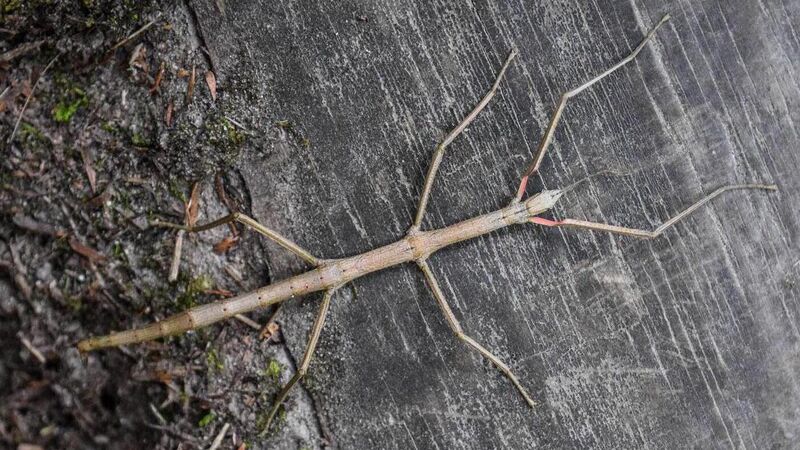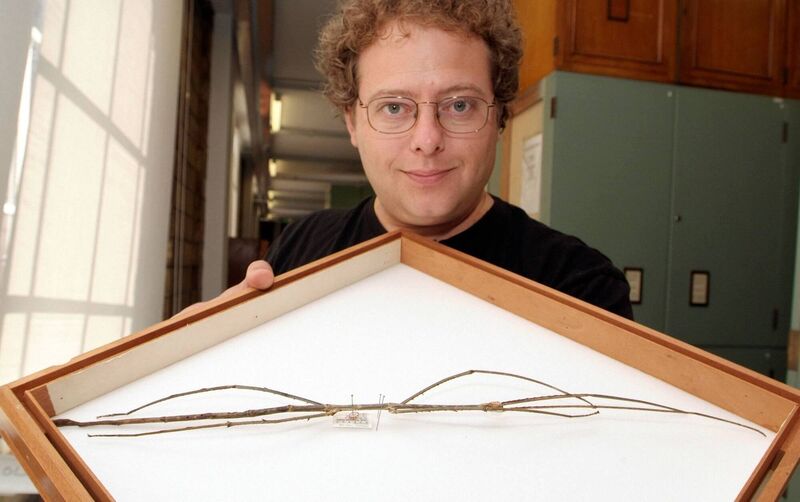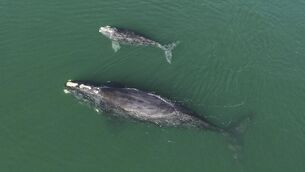What’s the story, twiggy glory... stick insects in Ireland

New Zealand stick insect Acanthoxyla inermis, also known as the 'unarmed stick insect', has been found in the wild in Cork and Kerry
If you were asked to list the creatures of Ireland’s countryside, you might rattle off the usual suspects: foxes, badgers, robins, rabbits, maybe even a few less-loved slugs.
But would a stick insect make the cut? Probably not.
And yet, believe it or not, Ireland has its very own colonies of these extraordinary masters of camouflage. They’ve likely been here for a while, hiding in plain sight.
Stick insects, or phasmids (from the Greek phasma, meaning ghost), are among nature’s finest impressionists. Their entire evolutionary strategy is built on looking like something they are not: namely, a twig. Some species add flourishes to their disguises, with lichen-like bumps or thorny protrusions. Others sway gently as they walk, mimicking the way branches stir in the wind.

Globally, there are more than 3,000 species of stick and leaf insects, mostly in the tropics and subtropics. They come in a bewildering variety of shapes and sizes, from the minute Timema of California, barely 1-centimetre long, to the gargantuan Phobaeticus chani of Borneo, which can stretch to more than half a metre when its legs are extended.
Ireland, it must be said, is not prime real estate for stick insects. But one hardy outsider has taken root: the New Zealand stick insects, called the unarmed stick insect (Acanthoxyla inermis). Typically, apple green or brown, 8–12 centimetres long, with a smooth body and delicate legs. Some sport lichen-like mottling or mahogany red hues that can shift to pale brown in hours, blending seamlessly with brambles or rose stems.
For decades, Irish classrooms kept the so-called Indian stick insect (Carausius morosus) as a pet. Many assumed that our outdoor stick insects were simply escapees from those tanks. But the evidence doesn’t stack up. Carausius rarely survives long outdoors here.

Instead, the true residents are New Zealanders. They most likely arrived not the horticultural trade, their tiny, seed-like eggs hitching a ride in the soil of imported plants. Once here, they found bramble hedges and mild coastal winters to their liking and settled in. Records from the iNaturalist place them in Kerry and west Cork.
Here’s a particularly Irish twist: the stick insects you meet here are all female. Acanthoxyla reproduces parthenogenetically, without males. Each female lays fertile eggs that hatch into clones of herself. Globally, males were unknown in this genus until 2016, when a rare mutant male was discovered in Cornwall in Britain, to the astonishment of entomologists everywhere. Ireland’s colonies remain exclusively female — a sisterhood, self-sufficient, cloistered in their brambles, continuing their lineage without so much as a nod to romance.

The great irony of Ireland’s stick insects is that they are simultaneously here and largely go unnoticed. Even in areas where they are abundant, people rarely see them. Because of their camouflage, a hedge full of stick insects still looks like… a hedge. Their eggs, dropped to the ground, hatch in spring (typically March to May), with tiny nymphs wandering onto walls or even indoors before climbing back to bramble or ivy.
Most reports come not from brambles at all but from houses and garden walls, where camouflage fails. A 'twig' on the bathroom curtain or crawling across a patio table is often what tips people off. If you’ve ever cut back ivy or picked blackberries and thought a stick gave you a funny look, you may already have brushed shoulders with one of these phasmid residents.
We have a long tradition of adopting incomers, whether it’s potatoes from the Andes or sycamore trees from Europe. Stick insects slipped in through the back door, found Ireland’s frost-free corners surprisingly tolerable, and quietly joined the extended family of our fauna.
Unlike grey squirrels or Japanese knotweed, these accidental arrivals don’t appear to disrupt local ecosystems... at least to our knowledge. But they are not routinely monitored. They are more like a curious neighbour who keeps themselves to themselves, though ecologists continue to monitor their presence to ensure no unforeseen impacts.
Every so often, though, someone notices them, and the word spreads.

There’s also something philosophical about Ireland’s stick insects. They remind us how much life goes unnoticed, even under our noses. We tend to think of biodiversity as something exotic, jungles in Borneo, coral reefs in Fiji — while in our own back gardens, entire dramas play out unseen.
A hedge in Kerry today might host the same insect lineage that clung to a potted shrub imported decades ago. And, of course, they remind us not to take appearances at face value. Sometimes a stick is just a stick. And sometimes, well, it gets up and walks away.
So, next time you’re in a garden, walking by a bramble hedge, or clipping back ivy, pause for a moment. That twig you brushed aside may not be a twig at all. With a little patience, you might spot a leg flexing, an antenna twitching, or the faint sway of a creature that has been 'hiding' in Ireland all along.
If you do spot one, consider reporting it to the National Biodiversity Data Centre or platforms such as iNaturalist. Every new sighting helps scientists map their spread. Stick insects may not be native to our shores, but they’re here, at least in the southwest of Ireland. In a world where the spectacular often steals the show, it’s nice to think that one of the world’s most remarkable creatures is also one of the easiest to miss.








